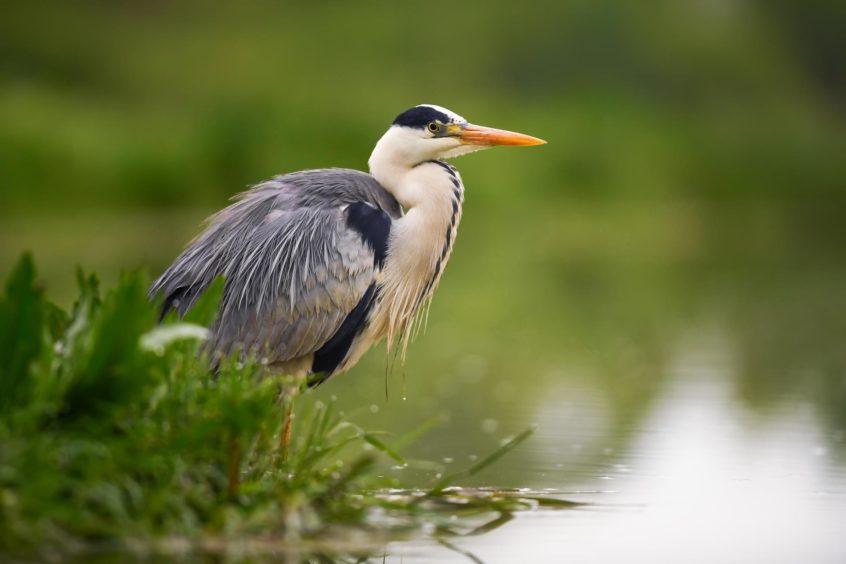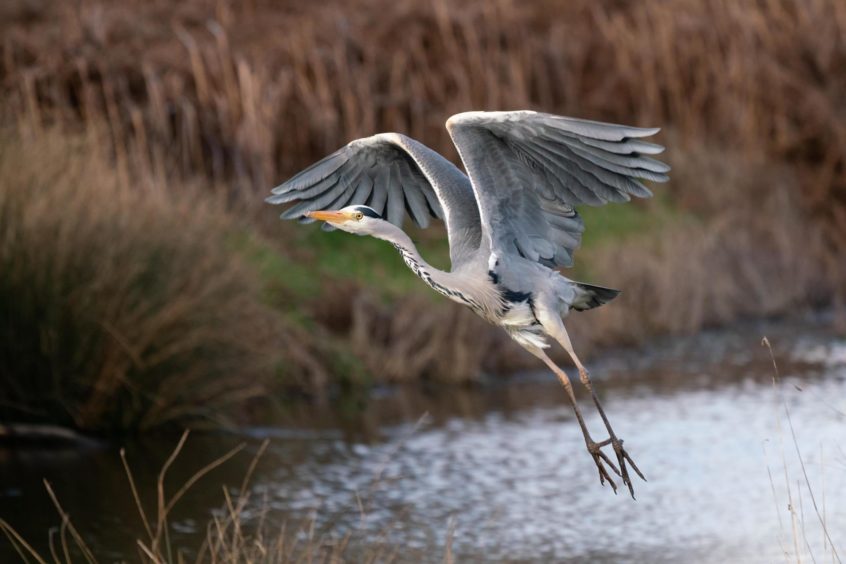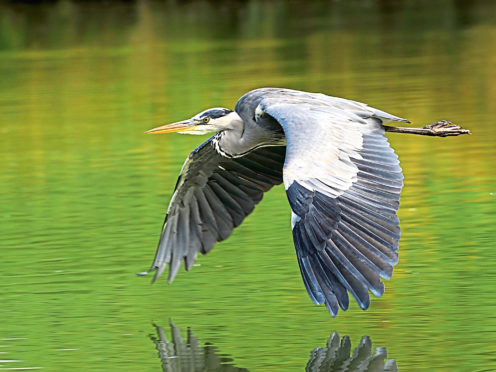In the early hours of the morning on the River Dee in Aberdeen a silent stalker can sometimes be seen on the banks hunting for fish in the shallows. It might still be dark with the full light of dawn still an hour away, but this grey heron is a resourceful bird, and it is using the glow from the nearby streetlights to aid in its quest for fish.
Its feet move with exaggerated caution with head and body tilted forward, careful not to cause a ripple or splash that may disturb a feeding trout or eel. The heron stops, it stares intently into the dark waters and then like the unleashing of a coiled spring, the long sharp bill quickly stabs downwards to grab a wriggling trout, which is nimbly juggled in the air, before swallowed head-first.
I used to frequently witness herons hunting in such a manner on the River Dee just upstream of the Victoria Bridge near Torry in Aberdeen and had assumed fishing during darkness was an unusual piece of localised behaviour, given that the heron is widely regarded as a daytime bird. However, I have since seen herons behaving in a similar way by a burn that runs through the village where I now live, who also benefit from the light from adjacent streetlamps.

Herons are adaptable birds, quick to exploit any feeding opportunity that come their way, and it wouldn’t surprise me if they utilised the soft illumination of the moon to aid nocturnal forays into areas away from our towns and villages.
Such opportunistic behaviour was further illustrated when I watched a heron at the weir on my local river which had quickly cottoned onto the fact that trout trying to negotiate its tumbling rapids provided an excellent chance for an easy meal. The heron would hang around the weir edge waiting for trout to come within striking distance, although in most instances, the fish remained tantalisingly out of reach.
The heron is one of our largest and most distinctive birds, but always shy and quick to take flight at the approach of a person. Such wariness perhaps stems from the persecution it once suffered in the past from fishery managers concerned about stocks, although today it is a protected species that thrives in many parts of north Scotland.

Unsurprisingly, given its stature and prominence, the heron is a bird that features widely in folklore. It was said that a heron’s foot exudes a scent that is attractive to fish and fishermen would carry a heron’s foot in their pockets to try and boost catches. But the most engaging tale is surely the delightful image conjured by the long-held belief that a heron’s nest has two holes in the bottom to allow the long legs to dangle through when it is incubating eggs.
Info
Whilst herons eat mainly fish, frogs form an important part of the diet in the spring. They will also take mice, voles, and large insects such as dragonflies.










